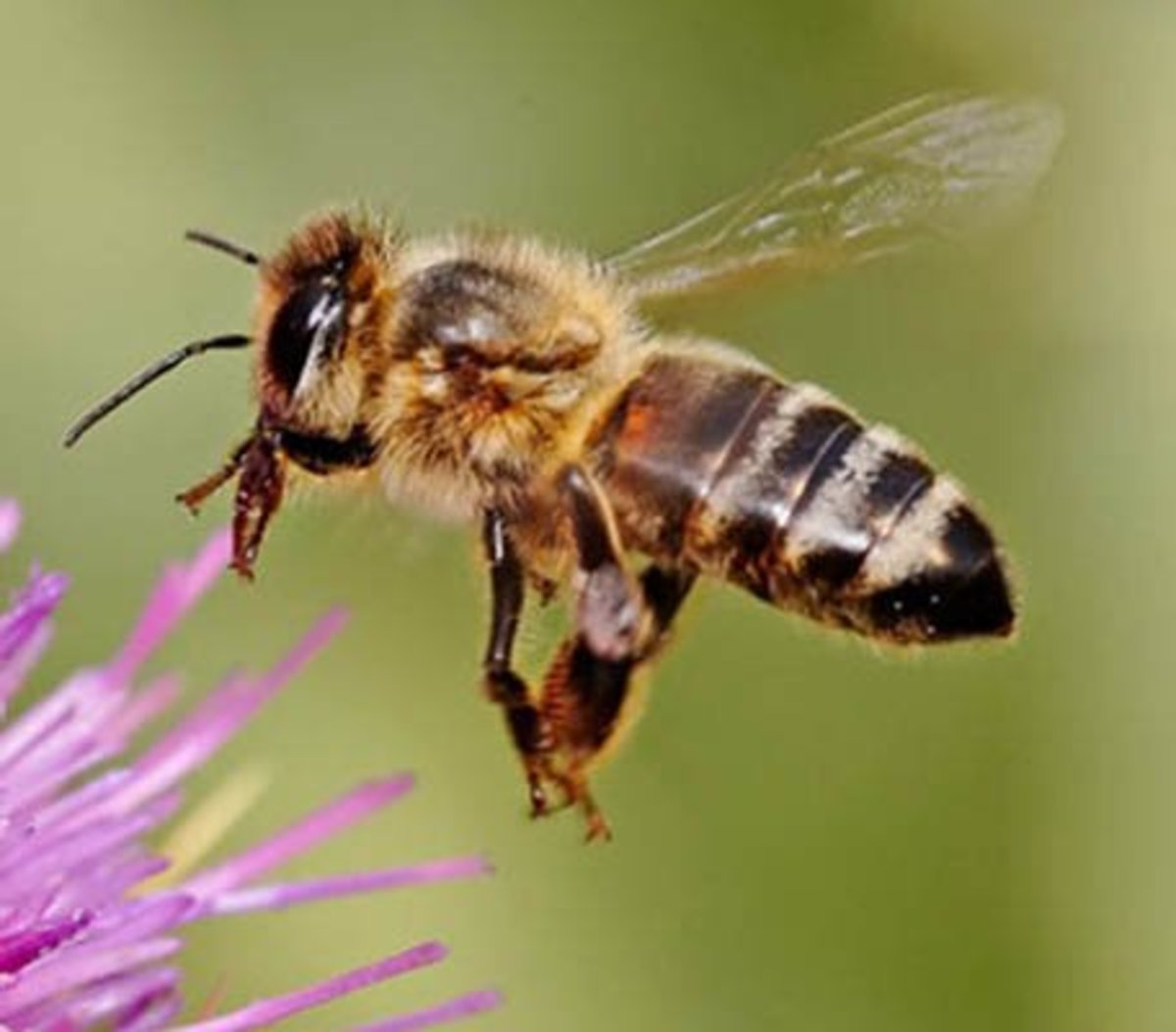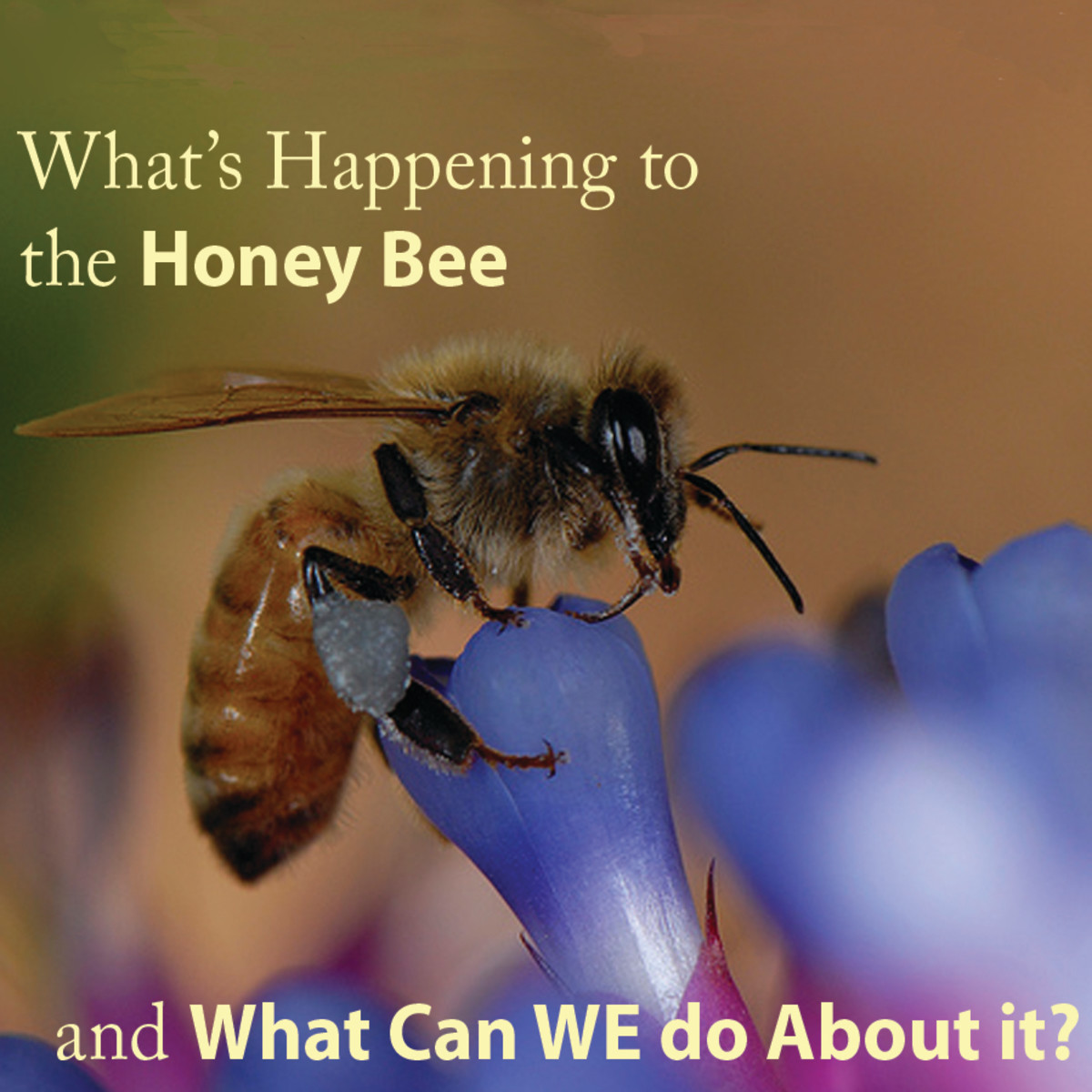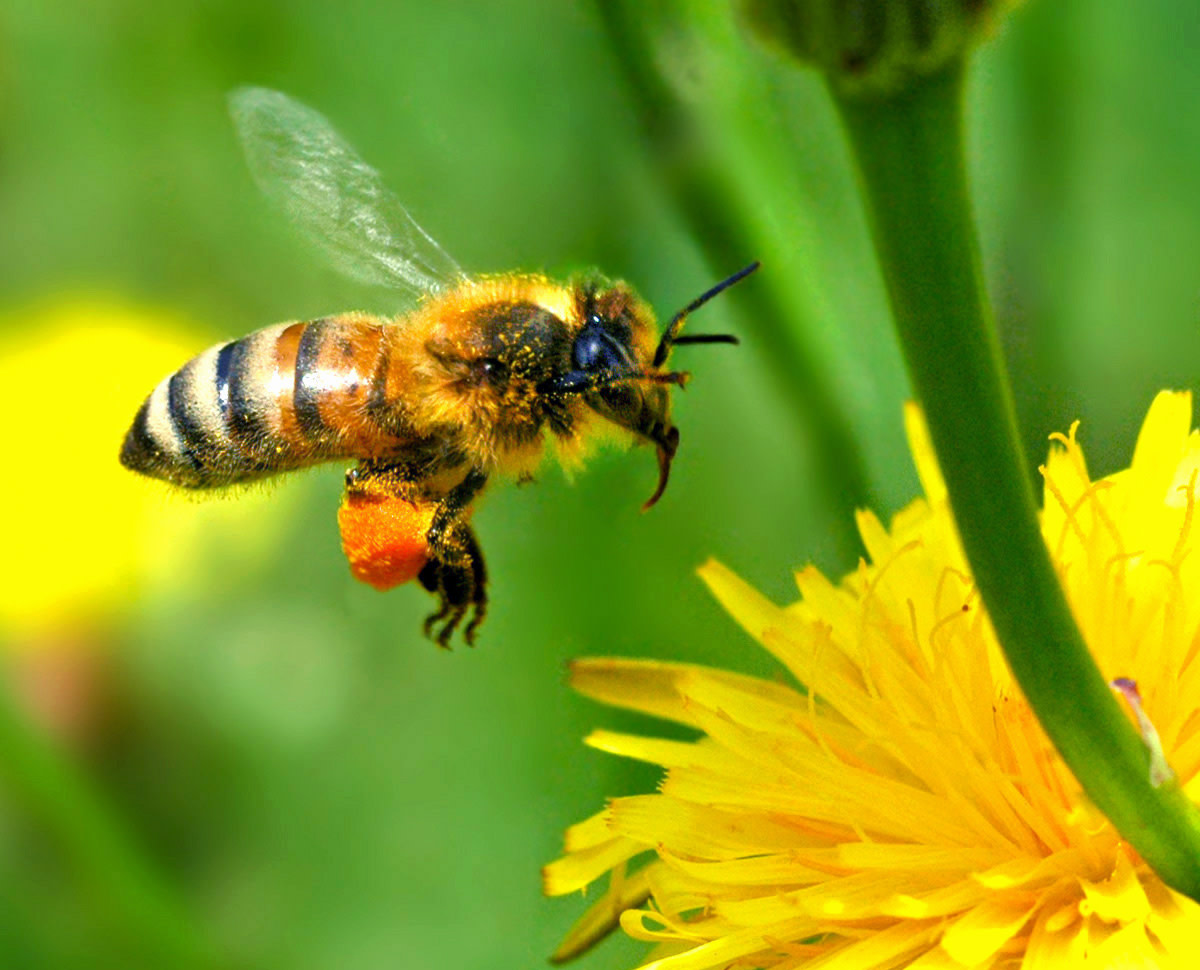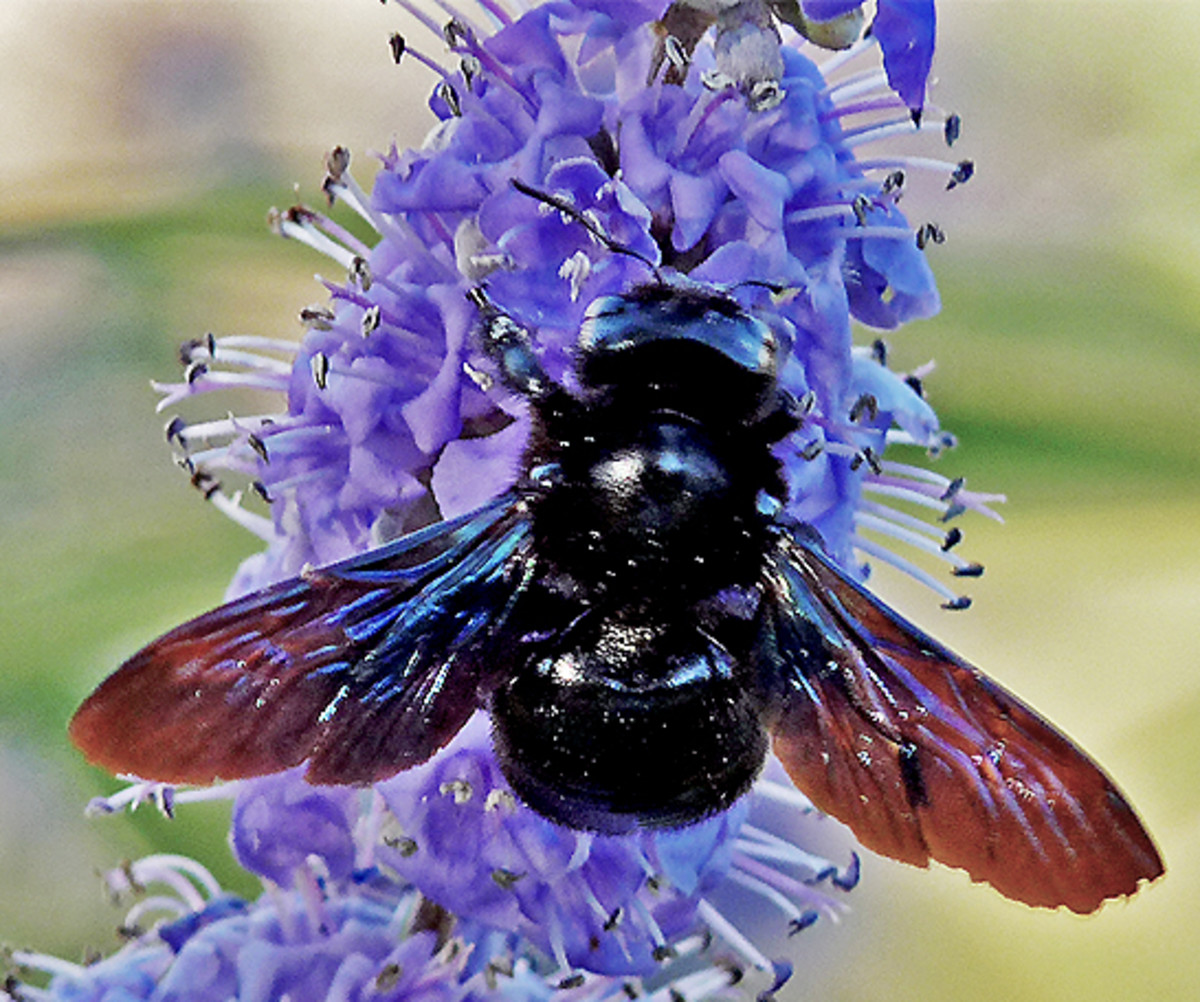Tracking ZomBees - Parasitized Honeybees and Their Impact on Food Supplies
ZomBees
Finally, you can help track the real-life invasion of ZomBees.
Yes, that was ‘ZomBees’. You can help track them at ZomBeeWatch. ZomBees are honey bees afflicted with a fatal problem that has them lurching and stumbling around prior to death . Fortunately, this is not an article about the existence of actual zombies or even zombie bees. There have been no instances of dead bees reanimating as the walking undead. There are no instances of actual zombies anywhere, at any time. Zombies are not real. However, the term is catchy and has lent itself nicely to this rather monstrous issue facing honey bees and their colonies.
Although the honey bee has been around for quite some time, the problem now facing them was discovered in 2008 by John Hafernik, a biologist at San Francisco State University. The afflicted bees are parasitized by a phorid fly known as Apocephalus borealis. This parasitic fly is native to North America. The fly, previously observed attacking both bumble bees and paper wasps, has begun attacking honey bees. A. borealis injects its eggs into the abdomen of a live bee. The fly larvae mature inside the parasitized bees, eventually killing them, but not before eliciting some rather strange behavior from the hosts. Once the fly larvae begin to mature, the bees begin walking in circles, flying at night, and soon are abandoning their hives. Once they abandon their hives, they quickly die. The maggots, growing inside the bee’s abdomen, continue to feed on the insides of the now deceased bee. When the host is consumed, the maggots exit the bee to pupate nearby. In two to four weeks the pupae hatch into adult flies and the cycle begins again.
Colony Collapse Disorder
Honey bees are already under study due to the widespread problem of Colony Collapse Disorder (CCD). CCD occurs when most or all of the adult population of a bee colony abruptly disappears. Many times, the queen is still present with immature bees, known as brood. There is generally no evidence of dead bee bodies and the hive may contain honey. Since 2006, beekeepers have been tracking losses of up to 90 percent of their hives. While bee loss through death is an integral part of the life-cycle, the uniqueness of CCD is the abrupt disappearance of worker bees from the colony.
Bee disappearances are not altogether unknown in the history of apiculture. In fact, there have been a variety of names describing this phenomenon. Historically, bee disappearances have been known as disappearing disease, autumn collapse, spring dwindle, and May disease. The difference now is the magnitude of the disappearances.
Colony Collapse Disorder is significant for a number of reasons. Perhaps one of the most significant issues may be that scientists have no identifying cause for CCD. While bee disappearances have been mentioned in scientific literature as far back as the 1880s, neither the historical information nor the current research has yet led to the conclusive proof of any specific cause. There is currently an action plan in place to study and combat the impact of the bee disappearances.
The main point of the action plan is research. As no conclusive identifier for CCD has been proven, all possibilities are considered. One of the possible reasons for the colony collapse is this parasitic fly, Apocephalus borealis.
The Importance of Pollinators
The collapse of bee colonies is not to be taken lightly. A large part of our diet is contingent upon honey bee pollination. As much as one mouthful in three benefits from the bee. Nuts, berries, fruits, and vegetables are all benefactors of this pollination. A number of crops such as almonds are completely dependent upon the honey bee. The Californian almond industry alone requires over 1.4 million colonies of bees to maintain production.
Honey bees were brought over to the United States from Europe by the first settlers. Although not native to this country, in the 1940’s the United States had over 5 million colonies of managed honey bees. Today, that figure is approximately 2.5 million. While there are other native pollinators available, the honey bee is not only more prolific but easier to manage on a commercial scale.
In conjunction with the decline in bee colony population, there has been a higher call for pollination services. Many consumables are reliant upon the pollination that is currently being served by the honey bee population. If the underlying cause for the disappearance of bees remains a mystery, apiarists may continue to suffer dramatic losses.
If the decline in honey bees continues at a 33% yearly loss, the bee industry will be threatened. Although the honey bee population would not entirely die out, the economic viability would suffer. The resultant cost increase would be passed along to the consumer, resulting in less selection and higher prices in the market.
Possible Causes of CCD
Colony collapse disorder may be caused by a number of things. Pesticides have been under the gun for some time for their contribution to this problem. Apiaries in Europe have banned a number of pesticides that are still being used in the United States. Another possibility for CCD is the varroa mite. The mites not only feed off the bodily fluids of the honey bee, they also carry viruses that are particularly damaging with results such as deformed wings.
Scientists are also considering the possibility of inadequate diets as a contributor of CCD. A relatively new recommendation to beekeepers to feed their colonies protein in times of nectar shortages is now in place. Nectar shortages typically occur in times of drought and during the winter. The hope is that feeding supplements to the bees during these times will decrease losses.
One of the remaining ideas under consideration for colony collapse is simply that these losses are cyclical in nature. There is a hope that CCD will simply resolve itself, ending as abruptly and mysteriously as it began. The remaining bees may be developing a resistance to whatever underlying cause is behind the deaths and disappearances.
Studies continue and no one underlying cause has been pinpointed at this time. Parasitic flies creating ZomBees, poor nutrition, mites, or another unidentified factor may be the issue. As scientists and apiarists continue to battle CCD, we can attempt to help by tracking any instance of parasites.
Food Impact
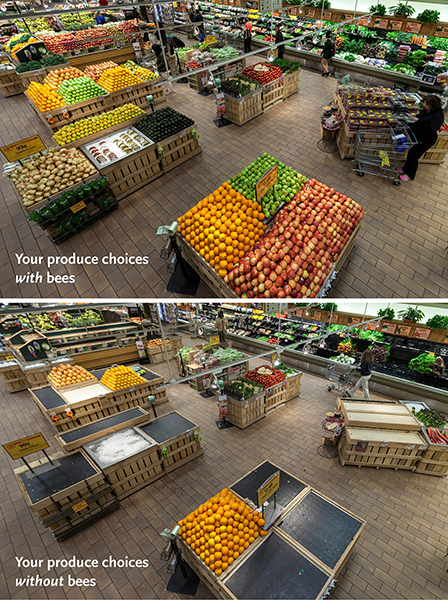
Future Impact
The future of the honey bee is uncertain. The cause behind colony collapse disorder is unknown. What we do know is that the honey bee is a major contributor to pollination of a large percentage of our fruit, nut, and vegetable intake. At the very least, if hive losses continue at the current rate, pollination costs will increase. The possibility exists that certain food items will simply be unavailable.
In order to raise awareness of the crucial nature of bees and pollinators, the University Heights, Rhode Island Whole Foods Market removed from their displays all the produce dependent upon pollinators. This experiment resulted in the removal of 52% of the normal produce available in the department. Out of 453 products, 237 items were impacted. Many of the items taken away are staples in kitchens across America. Some of the products removed from the shelves included apples, onions, broccoli, cauliflower, celery, squash, and carrots.
Pollinators are a necessary and critical link in our food supply system. More than 85% of plants on Earth require pollination.
As we continue to try to determine the underlying cause for high bee losses, it is important to remember what may be at stake. There exists the possibility not only of higher food costs but the loss of produce choices. It may be that the parasite creating ZomBees is to blame, or it may be a number of other factors including pesticides. Making informed decisions at the market (such as choosing organic) and tracking any known instances of parasitized honey bees can only help in the search for answers.

